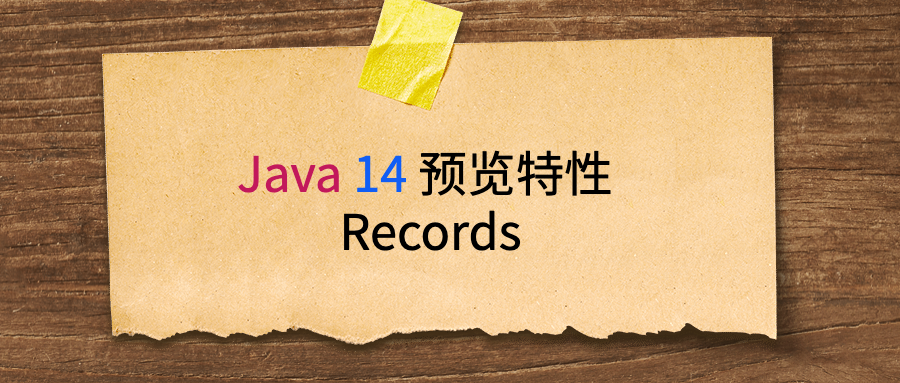
1. preface
This month (2020-03) Java 14 It's time for official release, there is one Java Characteristics that the community has been calling for a long time will serve as preview featureincluded in Java 14 Middle, this is JEP 359: Records。In other words, the effect is similar lombok the @Data Annotations, but not exactly, we finally don't have to write boilerplate code in the right scenario. Today we will come and feel it.
is actually more like Jvm language kotlin Data class in
2. Traditional data classes
Let's take a look at how we now declare a data class:
public class Range {
private final int min;
private final int max;
public Range(int min, int max) {
this.min = min;
this.max = max;
}
public int getMin() {
return min;
}
public int getMax() {
return max;
}
@Override
public boolean equals(Object o) {
if (this == o) return true;
if (o == null || getClass() != o.getClass()) return false;
Range range = (Range) o;
return min == range.min && max == range.max;
}
@Override
public int hashCode() {
return Objects.hash(min, max);
}
@Override
public String toString() {
return "Range{" +
"min=" + min +
", max=" + max +
'}';
}
}Let's take a look at the characteristics of this class:
- There is no parameterless constructor, so you need to assign values to member variables during initialization
- Member variables only getter method.
- Overwritten superclasses
Objecttheequals、hashCode、toStringmethod.
Although we can use third-party frameworks or IDE It's easy to write these boilerplate codes, but you have to write them anyway, right?
3. New Java Records
The verbose code above is in Java 14 We can write this way:
public record Range(int min, int max) {}That's right. It's simple! Does this grammatical sugar have a "f * cking" feeling? We declare this type of use record Logo (I don't know whether record will rise to the level of a keyword). when you use record When a class is declared, it automatically has the following functions:
- A simple way to get member variables, take the above code as an example
min()andmax()。Pay attention to different things from our usualgetterof writing. - a
equalsMethod, all member attributes of the class are compared when performing a comparison - rewrite
equalsOf course I have to rewrite ithashCode - A that prints all member properties of this class
toStringmethod. - Please note that there will only be one constructor.
Because this characteristic is preview feature, cannot be compiled and executed by default. Also taking the above example we need to implement:
$ javac -d classes --enable-preview --release 14 Range.java
$ java -classpath classes --enable-preview Rangein Jshell running in
jshell> Range r = new Range(10, 20);
r ==> Range[min=10, max=20]
jshell> r.min()
$5 ==> 10
jshell> r.toString()
$6 ==> "Range[min=10, max=20]"
jshell> r
r ==> Range[min=10, max=20]although record The declared class does not final Keyword, in fact, it is an immutable class. Except for some limitations, it remains an ordinaryJava Class. Therefore, we can add logic just like we add normal classes. We can enforce prerequisites when constructing an instance:
public record Range(int min, int max) {
public Range {
if (min >= max)
throw new IllegalArgumentException("min should be less than max");
}
}In addition, we can also provide Records Add ordinary methods, static attributes, and static methods to class, and no examples will be given here;
To simplify reasoning about grammatical sugar, member attributes cannot be declared within a class.The following is an example of the error:
public record Range(int min, int max) {
//Wrong demonstration
private String name;
}4. summary
Today's response to the upcoming Java 14 Preview features of Java Records An introduction was made. with Java Accelerate version iteration,Java It has gradually kept up with the pace of the times, and hopes that this great language will continue to be full of vitality.






